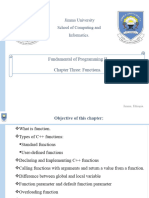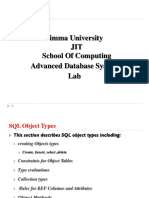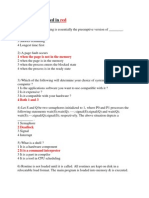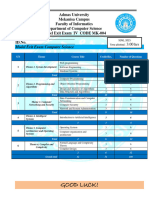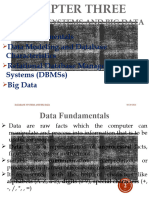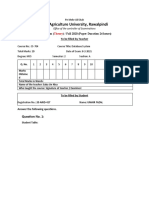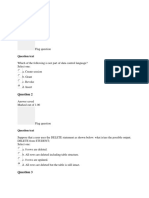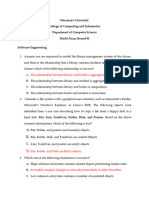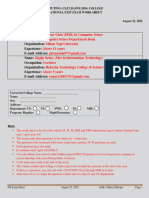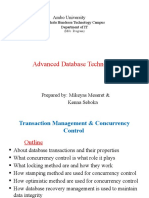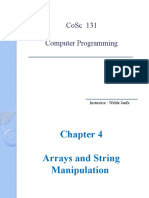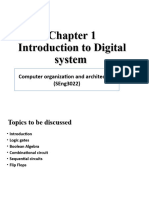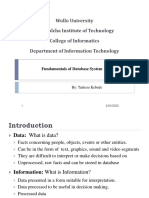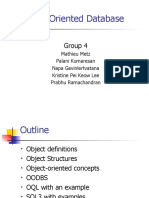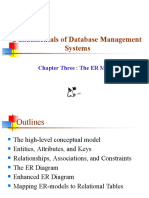100% found this document useful (1 vote)
275 views23 pagesChapter 1 - Concept of Object Oriented Database
The document discusses object-oriented database concepts including object identity, structure, and type constructors. It also covers encapsulation, inheritance, and object querying. Examples of object-oriented database features like user defined types and functions are provided.
Uploaded by
DinksrawCopyright
© © All Rights Reserved
We take content rights seriously. If you suspect this is your content, claim it here.
Available Formats
Download as PDF, TXT or read online on Scribd
100% found this document useful (1 vote)
275 views23 pagesChapter 1 - Concept of Object Oriented Database
The document discusses object-oriented database concepts including object identity, structure, and type constructors. It also covers encapsulation, inheritance, and object querying. Examples of object-oriented database features like user defined types and functions are provided.
Uploaded by
DinksrawCopyright
© © All Rights Reserved
We take content rights seriously. If you suspect this is your content, claim it here.
Available Formats
Download as PDF, TXT or read online on Scribd
/ 23
